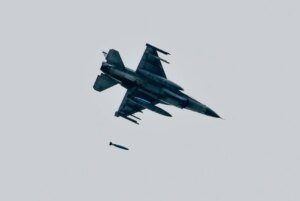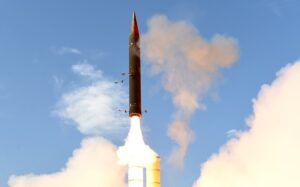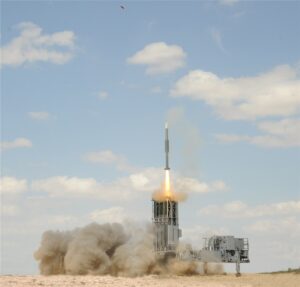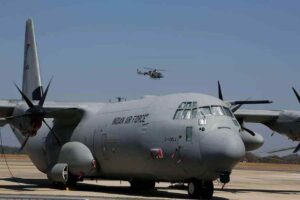印度加强空军力量,采购阵风战机应对中巴紧张局势
快速阅读: 2025年7月,印度空军计划扩大“阵风”战斗机编队,利用现有设施快速部署新战机。此举旨在应对与巴基斯坦的紧张局势,增强多用途作战能力,提高区域威慑力。
The
Rafale
expansion plan would make full use of the facilities already developed for the 36 aircraft inducted under the 2016 intergovernmental agreement with France. The Ambala and Hasimara airbases are both equipped with hardened shelters, weapons storage areas, simulators, and maintenance hangars specifically configured for the Rafale platform. These bases can accommodate additional squadrons without significant new infrastructure investment, allowing rapid operationalisation of incoming aircraft. The parallel acquisition by the Indian Navy of 26 Rafale M carrier-capable fighters, approved in April and scheduled for deliveries through the next decade, will provide commonality in training, maintenance, weapons, and spares across the Air Force and Navy, streamlining logistics and enhancing joint force interoperability.
Technically, the Rafale is a twin-engine, canard-delta wing multirole fighter designed for exceptional agility, survivability, and mission versatility. Its airframe integrates a high proportion of composite materials to reduce weight and radar cross-section, while the aerodynamic layout combines a large delta wing with close-coupled foreplanes to provide high lift and superior maneuverability across the flight envelope. The aircraft is powered by two Snecma M88-2 afterburning turbofan engines, each producing 50 kilonewtons of dry thrust and 75 kilonewtons with afterburner. This powerplant configuration gives the Rafale a thrust-to-weight ratio near unity in air-to-air loadouts, enabling high energy manoeuvres, sustained supersonic cruise at Mach 1.4 without afterburner, and a maximum dash speed of Mach 1.8.
The Rafale’s combat radius exceeds 1,000 kilometres for deep strike missions without refuelling, and its range can be extended significantly through buddy-buddy aerial refuelling or tanker support. The aircraft is fitted with the RBE2 active electronically scanned array radar capable of simultaneous air and ground tracking, providing long-range target detection and resistance to jamming. It also carries the optronique secteur frontal (OSF) infrared search and track sensor for passive detection and identification of airborne targets. The fully integrated Spectra electronic warfare suite incorporates radar warning receivers, missile approach warners, laser warning receivers, active phased-array jamming, and towed decoys, giving the Rafale a high level of survivability in dense threat environments.
In terms of armament, the Rafale is equipped with a GIAT 30-719B 30mm internal cannon and can carry up to 9.5 tonnes of external stores on 14 hardpoints. It is compatible with a broad spectrum of munitions, including MICA and Meteor beyond-visual-range air-to-air missiles, Magic II short-range air-to-air missiles, SCALP-EG stealth cruise missiles, AASM Hammer precision-guided bombs, and AM39 Exocet anti-ship missiles. The platform is also certified for nuclear delivery in French service, an indicator of its strategic-level capability and adaptability.
Compared to its regional competitors, the Rafale stands out in both performance and versatility. Against the Chinese-supplied J-10C operated by the Pakistan Air Force, the Rafale offers twin-engine redundancy for higher mission survivability, a larger weapons payload, and superior avionics integration. The JF-17 Block III, also in Pakistani service, remains a cost-effective lightweight fighter but lacks the range, payload, and advanced sensor suite of the Rafale, placing it at a disadvantage in beyond-visual-range engagements and multirole flexibility. Even the upgraded F-16s in Pakistani inventory do not match the Rafale’s AESA radar performance, electronic warfare capabilities, and diverse weapons compatibility. In a South Asian air combat context, these advantages translate into a greater ability to penetrate defended airspace, engage multiple targets simultaneously, and adapt to fast-changing mission requirements.
The strategic urgency for expanding the Rafale fleet is reinforced by the July 2025 escalation between India and Pakistan, triggered by a major terror attack in Jammu and Kashmir. Over four days of intense operations, both air forces conducted long-range missile strikes, precision bombing runs, and high-tempo patrols. The Rafale played a leading role in deep strike missions against strategic targets, including interdiction of enemy supply lines and suppression of air defences. Pakistan claimed that one Indian Rafale was shot down by a long-range PL-15 air-to-air missile launched from a J-10C, although India firmly denied the loss. Regardless of the claim’s validity, the incident highlighted the rapidly increasing capabilities of potential adversaries and the need for India to field more aircraft with superior sensors, range, and survivability.
Operationally, the Rafale provides the IAF with a true “omni-role” capability. A single aircraft can conduct an air superiority sweep, deliver precision strikes against hardened targets, execute maritime interdiction, and perform reconnaissance, all in the same mission profile if necessary. The aircraft’s advanced sensor fusion allows pilots to process and share a comprehensive picture of the battlespace in real time, enabling network-centric operations alongside other platforms such as the Su-30MKI, Tejas Mk1A, and future AMCA. The Spectra suite significantly enhances survivability in high-threat environments by detecting, classifying, and countering enemy radars and missiles before launch. The aircraft’s ability to operate from both well-equipped airbases and forward-deployed locations, combined with compatibility with NATO-standard and Indian-specific weapons, makes it exceptionally adaptable for two-front operational scenarios.
For the IAF, expanding the Rafale fleet through a direct government-to-government agreement offers immediate tactical and strategic benefits. It bridges the shortfall in squadron numbers more quickly than a competitive tender, optimises existing investments in infrastructure and training, and deepens industrial ties with France through local production and technology transfer. The combination of operational capability, logistical efficiency, and industrial partnership makes the Rafale a central pillar in India’s strategy to maintain air dominance and credible deterrence in the region.
(以上内容均由Ai生成)








